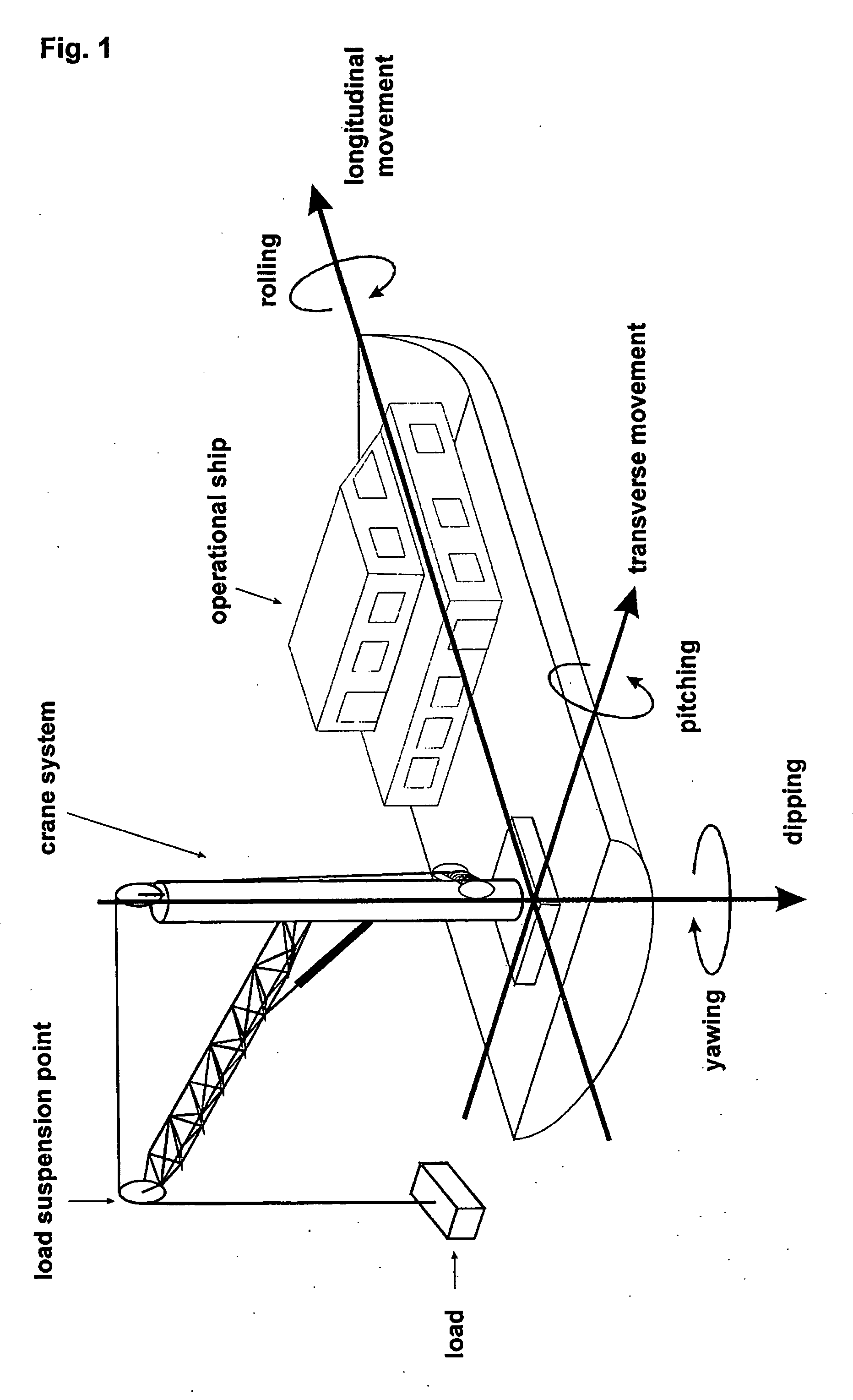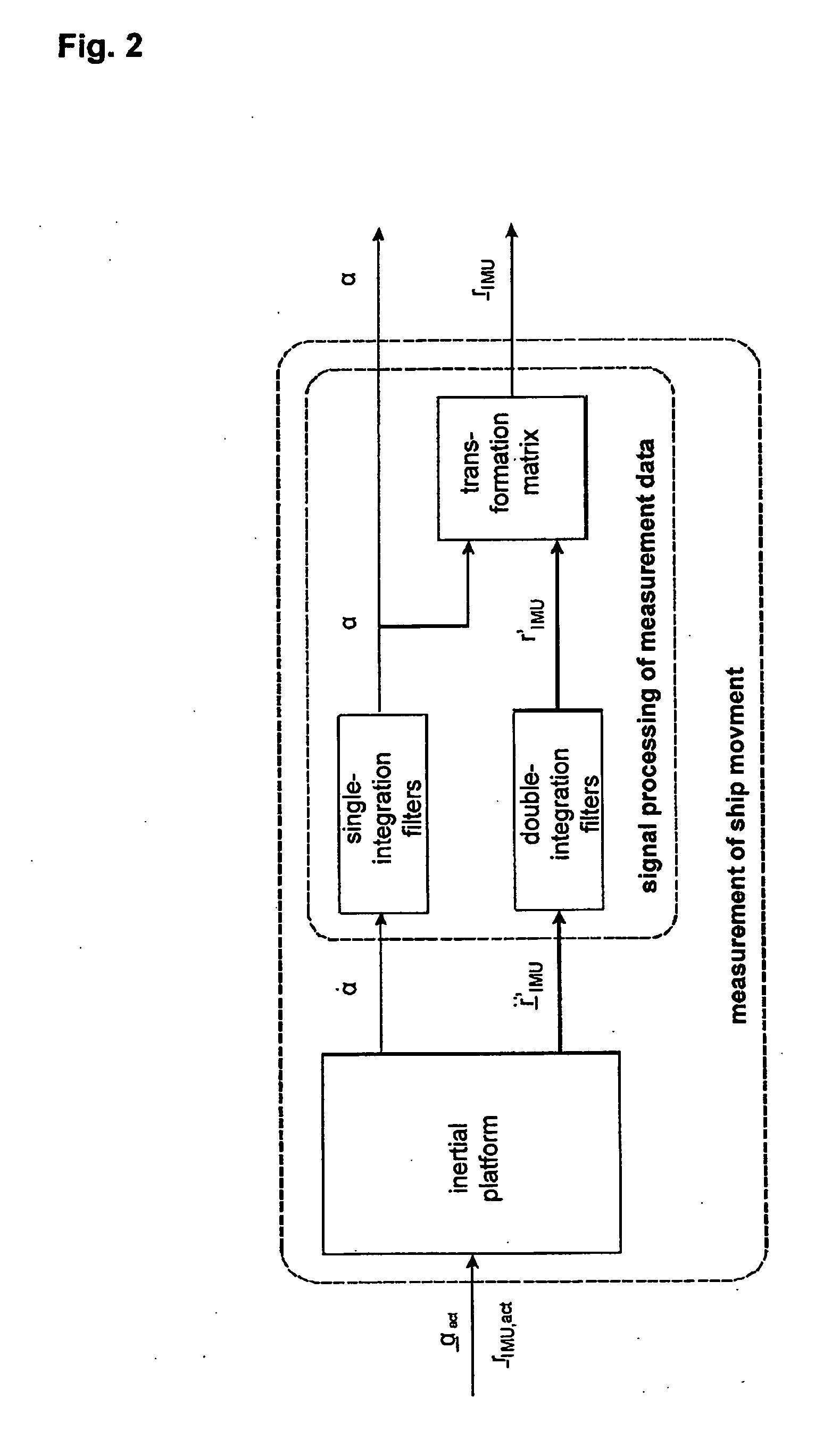Crane control with active heave compensation
a crane and active heave technology, applied in the field of crane control with active heave compensation, can solve problems such as delay in reaction, and achieve the effect of precise load positioning
- Summary
- Abstract
- Description
- Claims
- Application Information
AI Technical Summary
Benefits of technology
Problems solved by technology
Method used
Image
Examples
Embodiment Construction
[0043]Now, there is first described an embodiment of a measurement method which on the one hand is based on the measurement of the movement of the ship and on the other hand on the determination of the relative position of the boom tip of the crane system proceeding from its foundation. For the first-mentioned measurement task, an inertial platform is used, which measures the linear accelerations and rotatory rates of rotation about all three axes of the ship. The latter must be performed by the sensors of the crane system. With this measurement arrangement, a measurement of the dip movement free from drift, an extremely small phase shift in the significant frequency range of the dip movement, and a maximum measurement deviation of about 15% of the amplitude of the dip movement is achieved. The embodiment of a method for predicting the dip movement of the load suspension point is based on a model of this movement. Since the model can, however, not be created a priori, the same must ...
PUM
 Login to View More
Login to View More Abstract
Description
Claims
Application Information
 Login to View More
Login to View More - R&D
- Intellectual Property
- Life Sciences
- Materials
- Tech Scout
- Unparalleled Data Quality
- Higher Quality Content
- 60% Fewer Hallucinations
Browse by: Latest US Patents, China's latest patents, Technical Efficacy Thesaurus, Application Domain, Technology Topic, Popular Technical Reports.
© 2025 PatSnap. All rights reserved.Legal|Privacy policy|Modern Slavery Act Transparency Statement|Sitemap|About US| Contact US: help@patsnap.com



